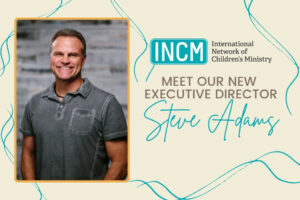Event feedback is so helpful in creating great long-term events and deciding what new events to add to your ministries.
With holiday events right around the corner, you might be trying something new or wondering how effective your current events are at meeting your ministry’s goals for the event.
The best way to assess your event’s performance is to get feedback from event attendees, volunteers, and other church leaders.
This article will tell you all the steps for creating a feedback survey, garnering responses, and implementing the feedback you receive.
With it, you’ll be able to improve your events for the community, as well as achieve the goals that you set.
Determine the goal of your questionnaire
Whether a community party or an outreach event, your church probably has some criteria for what would make an event successful.
So you need to get feedback.
But, asking people if they thought the event was good or bad doesn’t really help you to improve your event.
It’s better to ask people questions about how the community received the event and what they would want out of another event like this one.
For example, we put on a Bethlehem bazaar-type Christmas activity for our whole church.
We had a live nativity, petting zoo, kid’s crafts and activities, and free, fresh-baked goodies and treats.
It was a huge undertaking, and we regularly saw between 400-500 people at the event.
People would invite their friends and family to attend because it was such a special event.
The community at large loved it!
While it was a great event, the goal was to bring the community together and invite new people.
Both of these objectives were met.
Some common goals for children’s ministry events are:
- Outreach
- Communicating the Gospel message
- Connecting the Community outside regular services
As you assess the event, determine what the event achieves.
If it’s different than what you would like to do or what you feel God wants you to do, make the changes necessary to the event to create an event that achieves the goal that you decide upon.
Make the most of your survey
Demographics like the age of participants and where they’re from can be included at the top.
When you get feedback, you should only have about 10 questions in total.
Too long of a survey, many people will not fill it out, and you really do want them to share their input.
Here are a few tips on writing questions that engage your participants:
- Use a variety of different types or questions. i.e. short answer, scale from 1-5, long answer, multiple choice.
- Decide exactly what you want to know. Are you asking about hospitality, outreach, discipleship, or anything else? Make sure you ask directly.
- Use questions that let others make decisions for themselves. Leading questions will confirm your assumptions. Make sure you ask people questions that make them think about what they really want out of an event and if they got it from yours.
- Use clear language. Using ministry jargon or insider language is going to be challenging for new people who will take your survey. Consider how you are asking questions, and even ask someone outside your church to read through it before you send it out.
- Leave questions optional. If it’s a “fill in all” survey, people won’t usually fill the whole questionnaire out.
Find an easy form to send out
We are in the digital age, and so is any kids’ activity.
Surveys need to be easy to use for busy parents and community members.
Using a digital survey will be the best way to get feedback you need.
Whether it’s Survey Monkey, Google Forms, Microsoft Forms, or another form to collect your data, make sure you can use it easily.
What’s great about these tools is that these forms will aggregate the data and feedback, and give you a document with responses so you can see them all in one place.
This makes it easier to see the data and gives you one
Send out your feedback form
Now that your survey is created, you’ve got to get it out to your community and event attendees.
You will need to send out your form to everyone in your audience, but you will not get 100 percent participation.
To get a better result, consider several ways to send it out.
Send it via email, text message, on post it on your Facebook event (if you advertised there) for people to click and fill out.
Caution: Don’t post your publicly on your Facebook account as there are bots that can fill out your survey and spoil the results.
Another option is to create a QR code connected to the survey to hand out in your weekly bulletin, in a flyer from the event, on a poster near the exit of the event, or on a slide in your Sunday morning service.
Finally, word of mouth is a great way to let people know you want their feedback.
Tell people you want them to share their feedback with you and encourage them to fill out the survey.
Select a deadline for your survey
However you get it out, there are benefits to selecting an end date for collecting feedback.
Consider about a week or two as the window for receiving responses.
You don’t want the survey to remain open for too long as it won’t help you to implement changes and usually you won’t get more filled out.
Having the data
You’ve sent out the survey and now you have some results.
What do you do now?
Give yourself and your team time to look through the results, about 2 weeks following the event.
Seeing feedback too soon can cause you to have strong feelings, and possibly take on challenging feedback that you don’t need to.
Once you’ve had time to look through the feedback and think through your own, have a meeting with the team who put the event on and go through the event piece by piece.
Make sure you have the goal in view to assess if you met it.
Then go through the event, considering where the event was great, had challenges, or is solid.
Don’t change everything about your event if it had overall good feedback. Make tweaks to the parts that didn’t land well, and shore up what worked very well.
From the event I shared before, people loved using the foyer but wondered if we could have more stations and space for the elderly to sit and move if we put it in the gym.
This is a detail that was already working well, that we could change to possibly make it better for future events.
What do I do with negative feedback?
Negative feedback can be very helpful in making useful changes to your event.
While it can sting, and not all negative feedback is helpful, negative feedback can help you to analyze what really needs improvement.
It also can help you to analyze your event from a different perspective and go into new territory with your event because you’re willing to consider where the event didn’t meet expectations and what you can do to improve it.
Implementing feedback
Now that you’ve gathered and analyzed, you need to make a plan to implement your feedback into the event.
Take notes and put the feedback in the correct places so you remember to do it.
If you have an event manual, edit it right then and there.
If you have a master task list, fix it.
If you have notes for events, add your feedback for fixing there.
Conclusion
Feedback for your event will make it better in ways you know on your own.
By doing the work of creating and sending out great surveys for your big events, you will keep growing your events and making them better and better for the future.
Your events can reach new people and share the Good news, as well as create an opportunity to connect your members in a fun and loving environment.
Events that you put on can be amazing for your community, no matter how big or small.
Take the time to keep getting better.
Get feedback.






